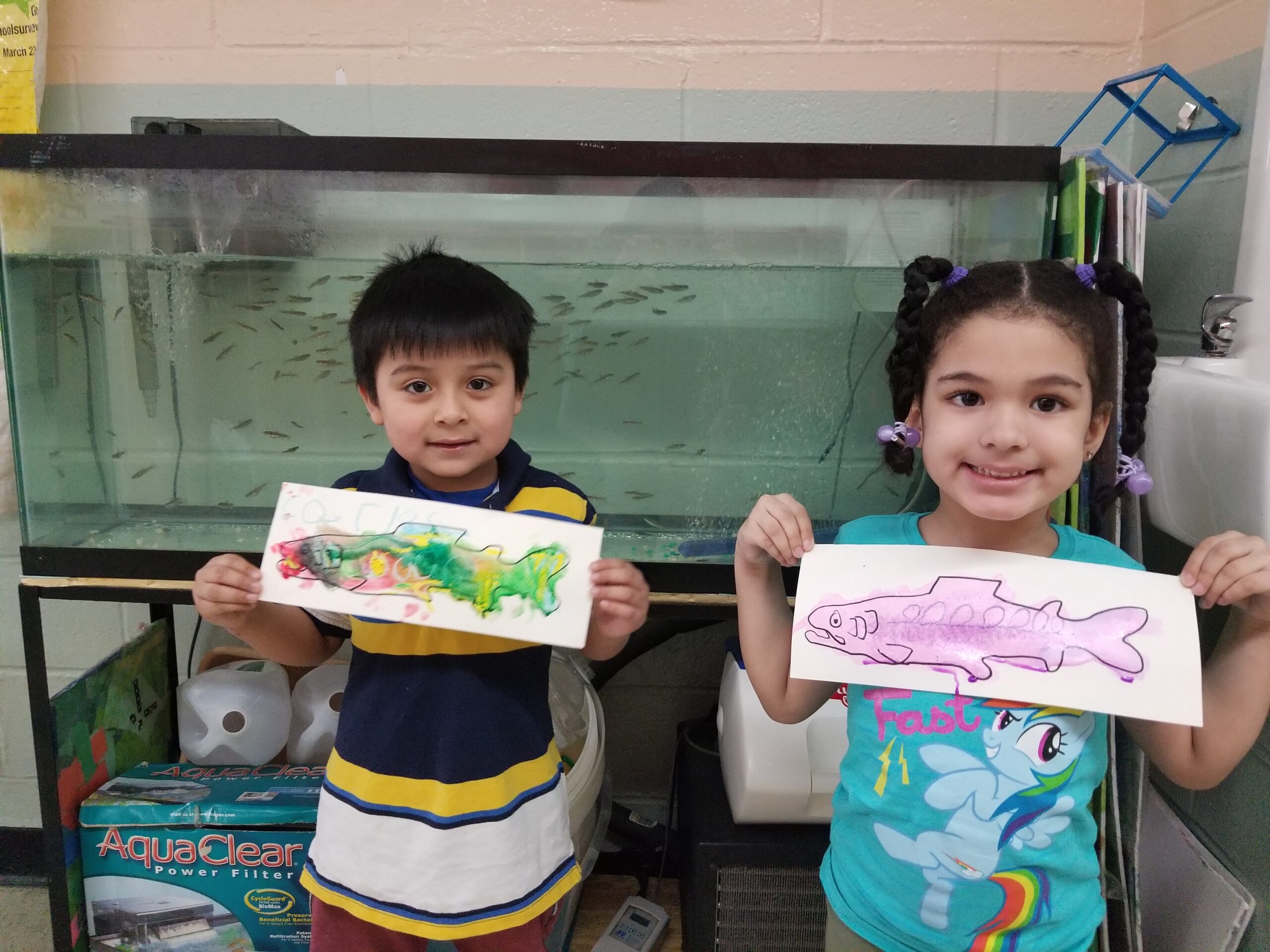- Conceived by Germaine Shick, Trout Unlimited
- Pilot lesson reviewed by Cate Collier, TIC teacher
Objective: #
To teach students that trout coloration and markings are indicative of specific habitats and therefore a form of camouflage that varies between species.
Background: #
Trout are an indicator species, which means that they are pollution-sensitive; their presence indicates that water is very clean. Like the forests they live in, brook trout are largely dark-colored—olive green and blue—with a flush of orange that arrives every fall during the spawning season. Trout species all over the world similarly match their native habitats. For example, sea-run trout are mostly silver and trout in the arid west feature golden hues.
Trout have many characteristic markings and external features. Every trout has eight fins, the smallest of which—the adipose fin between the dorsal fin and tail fin—is unique to salmonids (trout, salmon, and char). Many times these eight fins, along with the hard, protective gill cover, are colored in contrast to the fish’s body. Most trout also have small spots that are most dense on the dorsal side of the fish than on its ventral side. In addition to these small spots, some trout have dark parr marks—large oval spots that remain from the time when, as a parr (fingerling fish), the trout used them for camouflage. Finally, most trout have a colored lateral line that extends from the center of the gill cover to the tail.
Materials: #
- Images of various trout species
- Cups
- Paint brushes
- Water
- Watercolor palettes
- Copies of the trout outline
Procedure: #
- In small groups or as a whole class, have students look at artistic images and photographs of different species and subspecies trout. (Older students can do this research themselves.)
- As they look, tell students to identify and notice the colorings of the trout body, the eight fins, the gill cover, any spots, the parr marks, and the lateral line.
- Explain to students that trout often match their habitats in coloration and ask why this might be a good idea (protection from predators, more successful predation).
- Give each student water coloring supplies and a trout outline. Some students may like to have crayons to make small spots that resist the paint.
- Ask students to paint their trout, keeping in mind or referring to the images they just saw. Their trout can be unique, but it must still have trout-like features.
- Students who finish quickly can add habitat with paint or crayon.
Wrap-Up: #
Ask students to share their trout paintings, explaining to the class which distinct features they gave their trout. Students might also explain in which kind of habitat their trout lives in.






